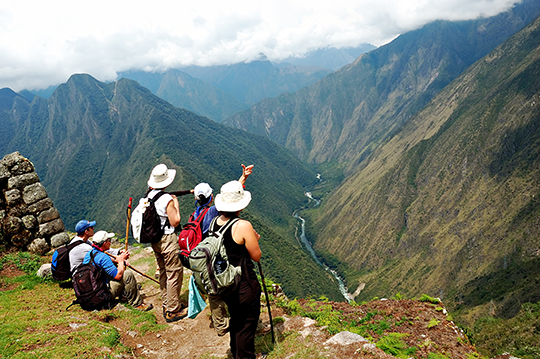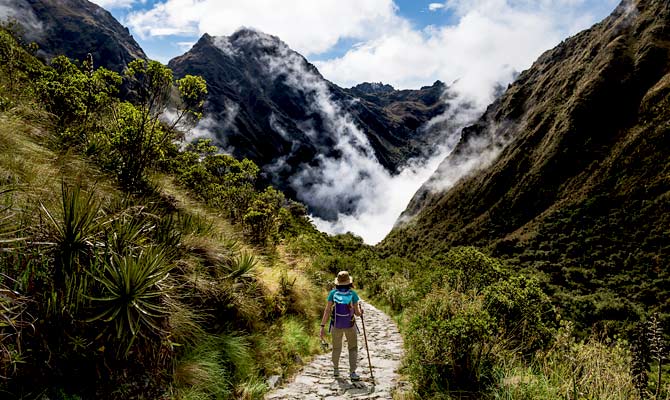The Inca Trail is an incredible 4-day trek through the Peruvian Andes, culminating in a first glimpse of the Lost City of the Incas from the Sun Gate on the fourth and final day. It is one of the most famous treks in the world, where you will literally be following in the footsteps of the Incas, treading the stone pathways that they paved hundreds of years ago. It is challenging yet rewarding group trek experience, and ticking it off your Bucket List is a must-do for any intrepid worldly traveller.

This week, the Peruvian government has released the permits for Inca Trail treks departing in 2015. Permits often sell out several months in advance, so it’s best to book as early as possible. If you want to embark on the trek in the high season between June and August, that means booking within the next month or two.
Tucan Travel has a team based in Cusco that is able to book and collect permits in person for you, once passport details and deposits have been received. Once confirmed, you cannot make any amendments to your Inca Trail permit, so it is very important to make sure you provide your details exactly as they appear on your passport – that means full name, date of birth, passport number, passport expiry date and nationality. If your passport is approaching its date of expiry, it is important that you apply for a new one at the earliest opportunity in order to apply for a permit using your renewed passport.

In an effort to preserve the historic Inca Trail Trek and its surrounds, the Peruvian authorities currently cap the number of Inca Trail trekking permits to 500 per day. However, only about 200 of these are allocated to tourists, while around 300 are assigned to the porters, cooks and guides necessary to escort them through the trail. 200 tourists a day is not a lot – so book well in advance to avoid disappointment.

The Inca Trail is closed each year throughout the month of February to allow for repairs, conservation and maintenance after the wet season, which puts considerable strain on the well-trodden stone steps and pathways of the trail. This is a necessary procedure to ensure that the Inca Trail remains well-preserved for posterity and is not worn down by over-use or exploitation. But don’t fret! In February, Machu Picchu remains open as normal – most people travel to the Lost City by train and bus combinations from Cusco.

If you are looking to trek to Machu Picchu in February, an alternative to the Inca Trail trek called the Lares Trek is available all year and is not affected by the annual closure of the Inca Trail. As it is not as famous, you will come across fewer trekkers and have more opportunities to interact with locals living by traditional means along the trek route in the heart of the Andes. The Lares trek is also a good option if you have made a last-minute booking or if Inca Trail permits have run out for the dates that you are looking to trek to Machu Picchu. For an in-depth comparison of the Inca Trek and the Lares Trek, click here.

Tucan Travel is an adventure tour operator with 28 years’ experience offering group tours around the world. With Latin America as our main product, and with a dedicated Operations team based in Cusco, we are a specialist in providing advice and guidance on trekking the Inca Trail, which you can do with us either on it’s own as an Add-on, or as part of a group tour. For more information on trekking the Inca Trail with Tucan Travel, click here.
About the Author: Marcus Hunt is Marketing Assistant for Tucan Travel. He has travelled independently throughout Europe and North, Central and South America, and has studied or worked in France, Italy and Brazil. You can find him on Google+ or read his other contributions here.
Spread the love



